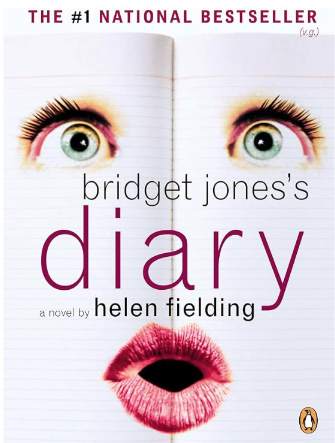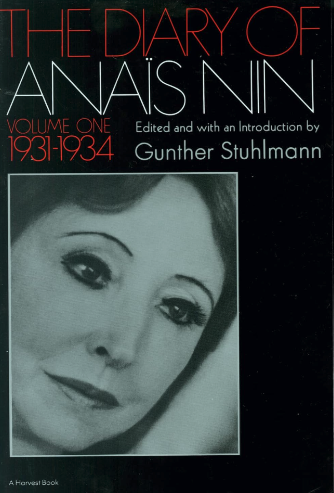Struggling with your memoir?
|
|
|
When you’re at the buffet at Sizzler, a little bit of everything might be a great idea. Have some salad, some taco fixings, three kinds of dessert. However, what works great at Sizzler probably isn’t the best plan for your memoir. This may sound counterintuitive, but when you’re writing your memoir, don’t give us a smorgasbord of details. You might be thinking, but what about creating a rich visual image for the reader? The question itself is already flawed. Your job is not to create a visual image for the reader. As an author, your job is to create an emotional experience. And too many details actually dilute that emotional experience.
A lot of information simply won’t stick in your reader’s brain. It also makes a reader work too hard. When an author describes every detail in a room, I have to concentrate to picture everything and it slows my reading (and my enjoyment) down a lot. Instead, you want to convey an idea about a place and then only add in the details that are related to that idea. In short, you want to describe a setting from the narrator’s point of view. Let me give you an example. The following details could be used to describe a hospital room: Smells of antiseptic. Adjustable bed. IV stand on the side. Heart monitor in the corner. White walls. Bathroom on the edge of the room. Those details make it feel like the author scanned the space from left to right and described everything they saw. The end result is that I might picture that room, but I don’t really feel it. The problem is that this kind of description is generic, which never works to affect your reader emotionally. How would you rewrite this without giving your reader a little bit of everything? How could you describe a hospital room using the narrator’s point of view instead of a generic description? This is how Laraine Herring describes her hospital room in the memoir, A Constellation of Ghosts. “Singing bowl chakra music plays on my iPad while the big cats frolic in silent, non-HD quality. The computer station to my right flashes its constant screensaver about the dangers of MRSA. The man in the room next to mine moans. He will moan for three days before he's gone. I won't know whether he died or was moved to another location.” The author hasn't given a generic hospital room. She's given her version of the hospital room, which include the specific details that are important to her. One of my favorite details is the MRSA screensaver. That is so much more telling than the generic “smells of antiseptic” or “white walls.” *** Here’s another example, this one from Truth & Beauty, in which the author Ann Patchett describes an auction. “In a long barn there were cafeteria-style tables set out with boxes. One contained seven dolls with plastic heads and matted hair, four chipped cups, a coil of rope, pulleys and two spades. The next had a toaster and a thick stack of record albums, half a dozen extension cords, several packs of playing cards, countless forks. Every box was an inexplicable collection of items that had to be purchased as a unit. There was no picking out what you wanted.” The writer doesn't spend any time describing the barn or the tables. Instead, she focuses on the one detail that makes the place unique, and what stands out for her. In doing so, she creates a sense of how odd the place is. So, here is a quick recap of how to describe a place from the narrator’s point of view:
I hope this helps. Happy writing!
0 Comments
If you've felt like your idea well has run dry, you know what it's like to have writer's block. In this video, Random House author Wendy Dale talks about what causes this effect and how to prevent it. Are you telling your memoir from your point of view? You’re thinking, Of course I am! I’m telling it in the first-person! But you may be creating a distance from your reader without even realizing it. Let me explain through the example below. “Our car raced down the street at breakneck speeds, whizzing past all of the other vehicles and almost running over a pedestrian. This pace continued as we maneuvered down the highway until we finally ran out of gas twenty miles later.” If you’re not seeing the problem with this, keep reading. The text I just gave you has a certain distancing effect, what I call the drone effect. If there were a camera recording this version of events, the camera would be positioned far above the action, recording all of it in a wide shot. However, in a memoir, we need the narrator's point of view, which means “the camera” needs to be inside the car. Instead of getting a global understanding of what is happening, we need to see only what the narrator is witnessing.
See if you notice the difference between this rewritten version and the previous one: “How could I get Johan to slow down the car? He was angry. I got that, but did that mean putting both of our lives in danger? There were just inches separating us from the car in front of us. If that car slowed down by just ten miles, we’d plow into its backend. Johan swerved just in time. I wonder how long he planned to continue at this pace.” In the example with Johan, we are not getting a generic, distanced point of view. Rather, we're sitting in the passenger seat with the narrator getting her point of view on everything that happens. *** Let me give you one more example. Here is the generic, drone point of view: “The man slammed his fist into my face. He pounded into me over and over again until he was too tired to keep inflicting pain.” How would I rewrite this so that the camera is “on the narrator’s head” so to speak? “I felt a searing pain in my stomach. Suddenly, I realized I'd been hit. I barely had time to register the next fist coming toward me. I instinctively covered my head with my arms, but he was stronger than I was.” In the second version, instead of witnessing this moment from a distance, we are seeing it through the narrator’s eyes, which works to make this so much more compelling. *** A reader picks up a memoir because they want to live through your experiences fully. They don’t want a generic account of what happened. So don’t distance your reader by being an anonymous narrator. This is your story. Give us your point of view. Hope this helps you. As always, happy writing! If you don’t understand structure, you’re not going to be able to write a good memoir. I can’t emphasize this enough. Structure in memoir is the way that you string your memories together so that you create a story. In fiction, this is called plot. Reading a novel or a memoir should feel very much the same – plot works in a similar way in both genres. However, arriving at plot in memoir is a very different process. In fiction, you just make it up. With a memoir, you’re relying on memory. The danger there is that disconnected memories are the opposite of plot.
Basically, what you want to do is connect your memories in some way. Creating structure means turning disconnected events into a story. Here’s an example to help you better understand how to do this. Let’s say you want to write about the following:
One way is to think of a concept that all four events might share. The first idea that comes to mind is “separation,” an idea that all four of these events have in common. Let me show you how I could take the concept of separation to help turn this into a story. I might start the chapter by introducing the concept of separation in my life. I've always felt separate from my family members. However, when I am 44 years old, tragedy brings us closer, at least when it comes to my sister. My sister calls to tell me she is getting a divorce. Then I would insert a scene of the phone call with my sister. By the way, we’re not actually writing out the entire chapter here. I’m just creating the summary version. Later I will write out the chapter in its entirely. I always suggest you figure out your structure before you get down to writing by the way! Back to the example… So now let’s come back to the idea of separation again to get us into the next scene. This is just one way you could do this: Over the next months, my sister and I have continuous phone calls. We speak in a way we haven’t since we were kids. The closeness makes me long for a relationship with my brother. So I invite myself over to his house. When I see my brother, I realize he's lost 80 pounds. All this time we’ve been distanced and here he has achieved a bigger separation, freeing himself from this weight that's held him down for most of his life. Are you kind of seeing where I’m going with this? I keep coming back to the idea of separation in a new way to connect what would otherwise be disconnected memories. Okay, let me finish off the chapter: In the midst of all of this, my dog goes missing. Suddenly, I'm separated from the companion who's been with me for eight years. In order to recover from this loss, I decide to escape to the Bahamas and take a break from my daily routine, a separation from my day-to-day existence. Take an idea and use it time and time again in your chapter to show your reader how disconnected events aren’t as unrelated as they first seemed. This is the key to turning memories into a story. Too many events recounted too quickly can quickly destroy your book. In this video Random House author Wendy Dale gives several examples to help you understand how this problem might play itself out in your manuscript. She also explains what it really means to "slow down your plot." Want to know what a reader actually remembers from your text? You'll get that info too. My students often come to me and say they have a really great memoir idea. My excitement builds until they say, “I'm going to structure it like a diary.” And suddenly, my enthusiasm fades. Some writers may believe it’s easier to write their memoir like a diary, but the problem with this is two-fold:
You might be thinking, “Well, why do some diary style books work?” The answer is that they don’t actually consist of disjointed, random events. Instead, one event brings about the next one. There’s this illusion of diary writing, but it’s really just traditional plot with breaks thrown in. For instance, in Bridget Jones’ Diary—is the narrator just recounting random events from her life? Not at all. Instead, there is a story, one about seeking Mister Right. Almost everything recounted in this novel is related to this search. The same is true of The Diary of Anais Nin, which is about Anais Nin’s relationship with Henry and June Miller. The problem I see in most memoirs written in diary format is that it really is a day-by-day account of what a person did. It’s just a bunch of random facts and events, which quickly causes any reader to become bored. If you do want to structure your memoir as a diary, you can make it work. I’d suggest writing it as a narrative first and only once you’ve created a fulfilling story for your reader, then would I suggest going back and breaking the story into diary entries.
Hope this helps you! As you work on your memoir this year, don’t make the mistake of letting your “in-between writing” ruin your structure. In between writing is remembering all the things that happened that aren’t necessarily relevant or interesting to the reader. It’s recounting a story exactly as you remember it. Let me give you an example. Let's say you're writing about a family vacation to Los Angeles. You have a scene at your mother-in-law’s house and a scene about getting accosted by Goofy at Disneyland.
The problem comes in when you write about everything happening between those events.
If you're not letting us live through an event with you, your reader doesn't want to hear about it. This is one of the most important things to keep in mind when it comes to writing your book. Anytime you mention something happening in your book, your reader wants to experience it with you in the form of a scene. *** Here is another example of the kind of writing that doesn’t work but which I often see in my students’ assignments: From Minneapolis, it was a four hour drive to Des Moines. Once we arrived in town we pulled into the first cheap hotel, we unpacked our clothes and went for cheeseburgers at a diner. After dinner, we filled up the car and bought snacks at a nearby gas station. We decided to go to a carwash as well. At the hotel, we had a restless night. In the morning, I was hungry, but we skipped breakfast because Jaime wanted to get on the road. We drove for three hours more when it started to rain. Finally, we made it to the border of South Dakota. In this example, the writer is recounting all the stuff she remembers, but it doesn’t need to be in the book. Instead, think about how your reader wants to live through moments with you through your scenes. In short, if you can’t turn it into a scene, just leave it out of your book. A huge problem I come across is people thinking that dialogue is crucial to their memoir. They often use dialogue to tell the story when narration would actually work so much better. In this video, I give several examples of scenes told through narration vs. scenes told through dialogue and let you decide which is a more effective way of getting your story across. I find that a lot of writers get stuck when it comes to the task of writing a scene. All of a sudden they start to question themselves: Where do I begin? Should I describe the interior of the stone cottage? Talk about the dank smell? Maybe start with a line of dialogue? I want to share several of the best ways I’ve discovered for starting out your scenes. Before I get to that, here are a few temptations to avoid:
1. Don’t describe the weather: There’s a reason that “It was a dark and stormy night” has become such a cliché: It’s because it’s not a very good starting sentence. In fact, talking about the weather is often a sign of a writer who doesn’t have anything else to say—much like those who talking about the weather in real life! Of course, there are some exceptions. If you are writing a book about Antarctica or the Bahamas, by all means, mention the weather. But if you bring up the weather, be prepared to really describe the weather. In other words, don’t mention the weather in passing as you go on to describe other things. If you bring up the weather, be prepared to talk about biting cold or blissful warmth or unending rain for at least a paragraph. Mentioning the weather in passing doesn’t add to a reader’s experience of your event. In fact, a reader usually glosses over the weather unless you take at least several sentences to truly make them experience it. 2. Excessive setting details: I have lots of writers who will take qualm with this tip. I’m not saying to never describe the place where your event is about to take place. What I am saying is not to use setting as a fallback because you have nothing else to write about. You don’t have to describe every place in detail in your book just as you don’t have to describe the look, smell and feel of every taxi your narrator gets into. Sometimes a person just gets into a cab. 3. Don’t name everyone in the room: Another trap I see a lot of writers fall into is to start out their scenes with a list of everyone who is present at the beginning of a scene. It’s Thanksgiving dinner and they tell us that they are at the table with their mom and dad, their sister Jenny, their brothers Bob and Jim, their sister-in-law Sara (the one who’s married to Bob), as well as Bob first wife Sally and his second wife Laura. Okay, I went on a little too long there for comedic effect. But I often see writers give long lists of names at the very beginning of their scenes. Instead, mention your characters one at a time as they become important to the scene. Now, let's go over important tips to start your scene: 1. Put us inside your head so we know how you feel. Let’s say your scene is about getting fired. One way to start out your scene is by letting us know how you felt right before that. You might have that first cup of coffee at your desk, thinking to yourself that it is going to be a great day. If it’s the day of your wedding, maybe you’re having doubts. You put on your dress wondering if you’re making the right decision. By putting us inside your head at the beginning of the scene, you also create suspense. Your reader already starts to suspect that something is about to change. 2. Summarize the main event. Every scene needs to contain an event, something that will happen at the end of the scene to give it a reason to exist. A great way of starting out your scene is to mention the main event in your very first sentence. Let’s say that the primary event in your scene is a car accident. If that’s the case, you can start out the scene by bringing up the accident. In other words, you might write something like, “The day I got into a car accident also happened to be Valentine’s Day.” Once you have summarized your main event (you could use anything from a sentence to a paragraph), then go back and start the story of the accident from the chronological beginning. “I was at the drive-in ordering breakfast wondering what James had planned for the day.” By telling them what the scene is going to be about, they’ll then have the patience to hear you out from the very beginning of your story. I hope that helps you better understand how to write your scenes without falling into clichés or overly describing the setting and characters. Happy writing! What are the most common mistakes writers make when it comes to their prose? In this video, Wendy Dale talks about traps that tend to "cheapen" your writing as well as how to avoid them. |
AuthorA Random House author offers tips on writing your own memoir. Archives
July 2024
Categories |
|
|
Memoir Writing for Geniuses.
All rights reserved. |









 RSS Feed
RSS Feed